|
|||
Muscle Shoals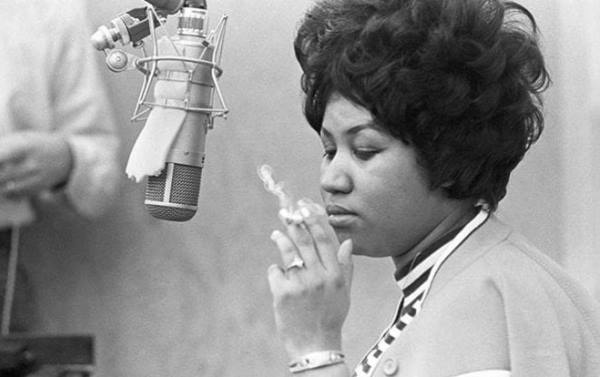 |
|||
|
CHRIS MIKSANEK - THE MED CITY
MOVIE GUY Muscle Shoals has got the Swampers. And they’ve been known to pick a song or two. Yes, they do — or rather, they have — for everyone from soul icon Wilson Pickett to classic rockers like the Rolling Stones and Rod Stewart. Director Greg “Freddy” Camalier’s documentary, Muscle Shoals, lionizes the sound that originated in Rick Hall’s FAME studio and its breakaway sect, “The Muscle Shoals Sound Studio,” in an unlikely northern Alabama town not particularly close to anything that became both an incubator and a mecca. Its isolation was as responsible for the unique sound as it was for attracting big names who enjoyed the unpretentiousness and ability to wander the region with virtual anonymity. That’s good and well, but the challenge of a documentary is to connect (or reconnect) with the audience — which Camalier handily manages, though it would be impossible not to with revered music that scores the soundtrack of our lives. Hits like Percy Sledge’s “When a Man Loves a Woman,” Bob Seger’s “Mainstreet,” Paul Simon’s “Kodachrome,” and Lynyrd Skynyrd’s anthem “Free Bird” all originated there. (Fun fact: Skynyrd roadie Billy Powell kept his classical piano training secret, but was discovered improvising when studio musicians returned from lunch; the song’s intro is his composition and performance.) Hall forged the original studio out of personal tragedy, creating a colorblind sanctuary in both a time and place that was the vortex of racial hostility: Governor George Wallace’s Alabama. While neither African-American nor long-haired hippie musicians could enjoy dinner without cold stares, in the studio they were all equals. Jimmy Cliff introduced the world to reggae on the very spot where Duane Allman would later invent Southern rock. Others backed by the studios’ musicians include Bob Dylan, Linda Ronstadt, Joe Cocker, Etta James, Little Richard and Clarence Carter, whose hit “Patches” describes Hall and his father’s relationship. Camalier effectively pulls all of this together to chronicle and pay homage to the sound that is the marrow of our collective anthology in an award-worthy documentary that is an engaging and well-paced tribute. Includes interviews with Mick Jagger, Bono, Alicia Keys and Keith Richards, as well as must-see vintage video of the Queen of Soul herself, Aretha Franklin. Turn it up. |
|||
 |
Get Smart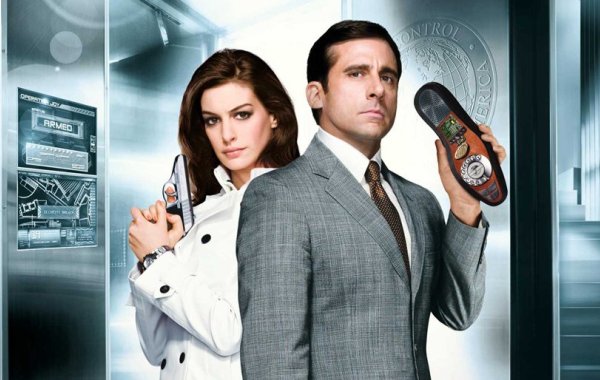 |
|
CHRIS MIKSANEK - THE MED CITY
MOVIE GUY Carell gets “Smart” down pat In this big screen version of the 60’s television classic Get Smart, Steve Carell is battling a weight problem, career stagnation, not-so-secret feelings for his hot partner and KAOS’ plans for world domination ... and loving it. After CONTROL’s headquarters are ransacked, compromised secret agents around the world are chewed-up like mini donuts at Rochesterfest. The agency’s Chief (Alan Arkin) has little choice but to promote mousey analyst Maxwell Smart to the rank of field agent. With the capable Agent 99 (Anne Hathaway), he’s charged not just with the formidable task of saving the day, but of doing justice to the original Mel Brooks series, as well. Carell does both in this film filled with gadgets, laughs, and plenty of nostalgic nods for the boomers — the shoe phone is back as are catch phrase like “Missed it by that much” — though familiarity with the original series is not a prerequisite. Fun cameos and sharp casting turn what otherwise might be dismissed as just another spy spoof (an Our Man Flint, Johnny English or Austin Powers) into what is literally the film of the century. The film of the year? Would you believe an incredibly fun way to spend a summer evening? |
  |
The Rite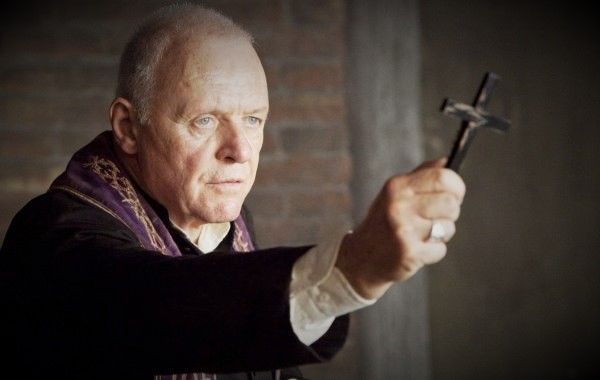 |
|
CHRIS MIKSANEK - THE MED CITY
MOVIE GUY One thing you need to understand about Catholics: to us, an exorcist is like a superhero. One minute he’s mild mannered, balancing a parish ledger or Christening a cherubic baby. But on a moment’s notice he can spring into action dashing-off with his black bag to battle evil incarnate. Such is the life we spy in the supernatural thriller The Rite, starring Academy Award winner Anthony Hopkins. The film is loosely based on Matt Baglio’s well-researched, The Rite: The Making of a Modern Exorcist and follows a surrogate would-be priest named Michael Kovak (Colin O'Donoghue) who, in training to exorcize demons, finds his own faith. In short, Kovak doesn’t originally set out to live up to his namesake (the similarly-monikered archangel). In fact, as something of an atheist, he enters the seminary only for a free college education. Upon his resignation, however, he’s cajoled into traveling to Rome to learn the ways of the exorcist. There he’s identified as a skeptic and paired with a veteran exorcist Fr. Lucas (Hopkins). Lucas is, himself, a reformed doubter with admitted relapses and through him we learn that the rite is legitimate and frequently used after natural explanations are dismissed through medical and physiological evaluations. As Kovak gradually accepts what he sees, his faith grows and in a classic cinematic third act redemption he is (predictably) called to action. For me, The Rite, like the 1973 film, The Exorcist, is a cure for the occasional bout of agnosticism. Crede ut intelligas; we cannot believe in one without believing in the other. The film then is a faith journey first and a horror film second. Unfortunately, as the latter, it doesn’t go far enough to satisfy fans of the genre. As the former, for moviegoers without the stomach for its unsettling moments, it may be too much. But it worked for me. As it strove for authenticity, it exposed human doubt. That’s just as authentic and engaging as the logistics of the actual rite which is often less spectacular than we anticipate (this Hopkins acknowledges when he asks Kovak, “What did you expect? Spinning heads and pea soup?” Well.... yes; yes I did). It’s also refreshing to see this story told absent the snarky anti-Catholic dialog that is all too typical. Not just told. Well told. And well executed. As Fr. Lucas, for instance, Anthony Hopkins is delicious (but don’t look for Hannibal Lecter, even when he’s channeling Baal) and newcomer Colin O'Donoghue sells Michael Kovak (though unremarkabl). In the end, The Rite is two separate films. As a supernatural thriller, it’s limp, but through the prism of faith it's an entirely different experience. What they’re saying in the balcony: Paul was impressed but conflicted. “It was good,” he said adding, “But I kept thinking: Regurgitating nails. Levitation? I’ve seen David Blaine do that. Why is this different?” [Feb 10, 2011] |
 
|
The Revenant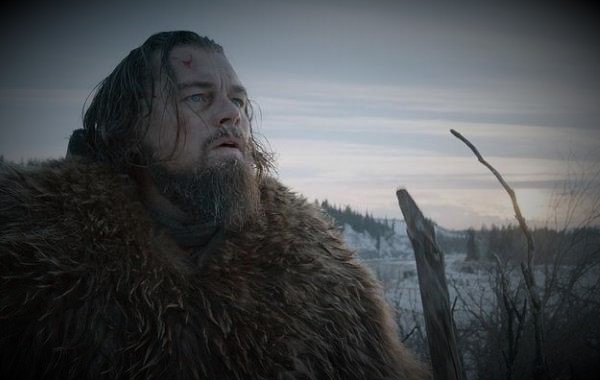 |
|
CHRIS MIKSANEK - THE MED CITY
MOVIE GUY Nearly two centuries ago, before paper and scissors were added to the palette of conflict resolution tools, rocks were the preferred method of dealing with disputes. Writer and activist Harriet Bishop, who started the first public school in the territory and for whom one of our elementary schools is named, documented frontier savagery. “The world has no record of such inhuman acts!” she wrote before creating one such record in her 1864 book, “Dakota War Whoop,” describing one raid that left an early settler decapitated, one child skinned alive and another child nailed to a tree. History is unsettling and sometimes requires a strong stomach. So it is understandable why those uncomfortable with it might prefer a bowdlerized version. Oscar-winning director Alejandro Iñárritu (Birdman) is not one of them. Had he pulled punches in The Revenant, the true tale of frontiersman Hugh Glass who “survived death,” this story might not be remarkable and Leonardo DiCaprio would not be on the way to a long-deserved Academy Award of his own. Leo is scout Glass who, after fur-trappers are brutally ambushed by Pawnees, must lead them back to their fort safety. But while exploring the trail a few miles ahead of the group, he’s viciously attacked by a grizzly — ripped at and tossed like a rag doll in one of the most chilling scenes of cinematic violence. Nearly impossible to carry, he’s left behind with three attendees, one being his son, to see to his comfort until he succumbs to his wounds. Impatient (or pragmatic) trapper John Fitzgerald (the under-appreciated Tom Hardy) tries to hasten the inevitable, murdering Glass’ son in the process, then leaves the incapacitated Glass for dead in a shallow grave. DiCaprio, one of the industry’s most committed actors, crawls out of the grave (the word ‘revenant’ means one who comes back from the dead) and treks some 200 miles across the cold and rugged Dakota territory to exact revenge. Lots of “eewww” moments. For instance, before he self-cauterizes it, Glass takes a drink and water gushes from his throat wound. It all contributes to the aloneness he experiences in the vast wilderness and the necessary self-reliance men of the time no doubt summoned to survive. If Iñárritu’s storytelling is magic, two-time Oscar cinematographer Emmanuel Lubezki (Gravity, Birdman) works the mirrors for him. Ugly, poetic, awe-inspiring, and most important, authentic, all at once. [Oct 17, 2013] |
 |
|
Saving Mr. Banks |
|
CHRIS MIKSANEK - THE MED CITY
MOVIE GUY It’s a small world after all. Who would have guessed Walt Disney and Mary Poppins author P. L. Travers shared a quality that helped close the House of Mouse patriarch’s two-decade-long negotiations to bring the popular nanny to life on the big screen? What we get from this charming dramatization of Walt’s dogged pursuit for movie rights is that while he’s been able to move past a less-than-perfect relationship with his own dad, Travers is not. The head of her fictitious Banks family is a manifestation of her whimsical but alcoholic father (Colin Farrell, brilliantly), both of whom are flawed characters capable of redemption. On that she won’t budge or permit trivialization. Unfortunately, she’s not convinced Disney’s commercial eye sees the same story — it’s not the children who need saving, it’s Mr. Banks. That and her inability to confront her own past gives rise to preposterous stipulations. “There can be no red on the screen, anywhere, ever, at all,” she says early on; and of casting Dick Van Dyke? “Oh, my! No, no, no!” (As if even the sound of it is something quite atrocious.) Walt’s thick skin and persistence eventually win her over. In the process, we gain insight and an appreciation for what goes into the making of a classic. Few actors have the gravitas for Walt Disney, who here is as protective of his mouse as she is of her nanny. Tom Hanks is one of them, delivering an Oscar-caliber performance. As for Emma Thompson, she plays Travers in a most delightful way — though not at first. She’s a tough nut to crack, but chauffeur Paul Giamatti does a pretty good job trying. Lots to like in Saving Mr. Banks, the best film I’ve seen so far this year. |
 |
Mr. Peabody and Sherman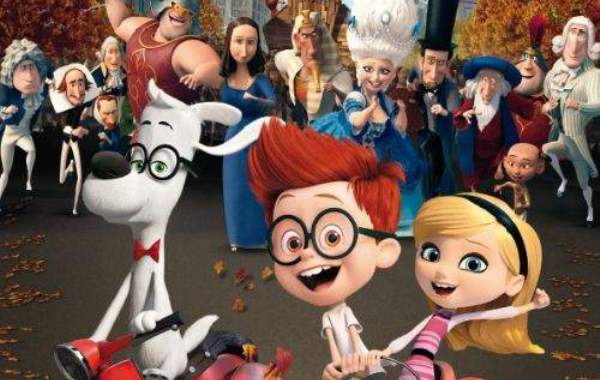 |
|
CHRIS MIKSANEK - THE MED CITY
MOVIE GUY a/k/a: ‘Searching for the Royale with Cheese’ Mr. Peabody is above fetching a newspaper. Writing for one, yes, but fetching? Never. The university-educated canine is an accomplished inventor, musician, chiropractor, scientist ... he’s even adopted a boy, Sherman. But what impressed me most about the smug spaniel is how well he speaks Czech. In fact, everyone in the animated revisit to the 1960’s classic Jay Ward cartoon spoke flawless Czech. Shermen, his friend Penny, and all of the historical characters they visit including Marie Antoinette who says, and I am not making this up, “Let them eat kolache.” Here in the Czech Republic, where I am validating my own pedigree this week, the dubbed film Mr. Peabody and Sherman is titled Dobrodružství pana Peabodyho a Shermana. (Thank you cut and paste!) Like us, Czechs love the movies and their movie-going experience is not unlike ours. Admission is comparable. I paid 199 CZK ($10) to watch the duo prance through time in their WABAC machine in digital 3D. The theater was clean, comfortable, and sat about 350. Concessions were primarily popcorn and soft drinks but at about only half the price. It is also common to choose your theater seat from a chart when you buy your ticket. The middle-school daughter of a couple with whom I shared a restaurant table told me she and her friends love watching movies with American subtitles to help learn our language. (Why not? All the Italian I know came from watching The Godfather.) I screened this one commando — no subtitles — and my Czech is not very good so I had to rely on the visual gags. The animation was crisp in this DreamWorks release, but I expected more from the co-director of The Lion King. I counted four butt jokes, five if you count Peabody refusing to sniff one. The plot is thin (think Peabody and Sherman’s Excellent Adventure); essentially Sherman gets into trouble trying to impress a girl and Peabody has to go “way back” to rescue them in overdone scenarios: The Trojan Horse, ancient Egypt, da Vinci painting Mona Lisa, etc... Three past big-release adaptations of Jay Ward classics flopped (2000’s The Adventures of Rocky & Bullwinkle, 1997’s George of the Jungle, and 1997’s Dudley Do-Right) and I am not sure we need a WABAC to know this one is headed. The film’s preceded by a charming short called Skoro doma (The English version is titled Almost Home and the alien captain is voiced by Steve Martin). All things considered (my reaction to the visuals and the number of chuckles I heard from the audience who knew the language) I give this Czech version three dumplings, I mean ... |
  |
21 and 22 Jump Street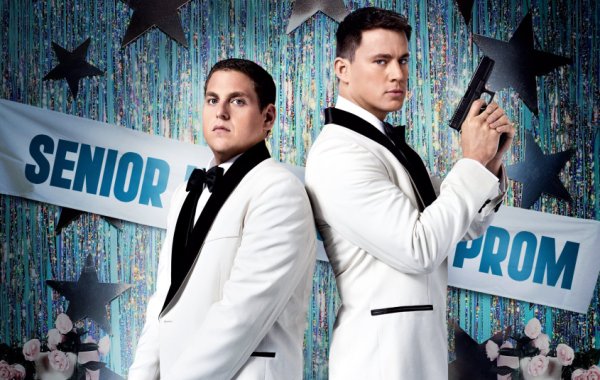 |
|
CHRIS MIKSANEK - THE MED CITY
MOVIE GUY 21 Jump Street: I don’t want to say I watched a lot of TV as a kid, but when I read bedtime stories to my own kids, they all started, “Once upon a time, there were three little girls who went to the police academy.” So, yea, television is part of our collective pop culture. No surprise then that when they’re stumped for new ideas for the big screen, Hollywood looks to the little one. Among the best have been The Untouchables and The Fugitive. The worst: Lost in Space. Somewhere in between is 21 Jump Street, the new comedy starring Channing Tatum and a svelte Jonah Hill. This R-rated buddy-comedy finds the two newly-minted cops each assigned very hazardous duties. Not. But a revival of the Jump Street program sends the youthful pair back to high school, undercover, to bust a dangerous synthetic drug ring. There’re some predictable laughs. The two were polar opposites in school — Hill was, surprise, nerdy and Tatum, no way, was a jock. Since then, they’ve joined forces to cover each other’s blind spots in order to survive the academy à la Rebecca De Mornay and Mary Gross in Feds. A lot has since changed with regards to what’s cool and the tables quickly turn. Hill is now popular and Tatum lands in AP Chem. Not for long. In too deep they get into a fight and are expelled then consequently kicked off the force. They’re then recruited by a student to watch his back just in time for the big deal to go down. Tatum is great here, but the “Slim Shady” Hill is not nearly as funny as the old “Biggie” Hill. Johnny Depp, who got his start on the series, makes a great cameo as an undercover DEA agent though Rochester moviegoers will hoot louder for Lourdes graduate Johnny Pemberton who’s one of Hill’s smart clique. Unfortunately, 21 Jump Street doesn’t seem to know if it’s a serious play on the franchise like Mission: Impossible, or a spot-on spoof like Ben Stiller and Owen Wilson’s Starsky & Hutch. It’s not without laughs and won’t be without a sequel (Richard Grieco, stand by) but neither is it a spectacular treatment worthy of the iconic series. 22 Jump Street: It wasn’t a particularly great TV show in 1987 and was only mildly entertaining in its 2012 big screen treatment. But it must have made some money because the geezers are back. This time moving across the street to a more elaborate abandoned church with the address 22 Jump Street. Long in the tooth now, this time undercover cops Jonah Hill and Channing Tatum infiltrate a college where the geriatric gags get, pardon me, “old” after a while. ”Seriously, we’re college students,” Hill assures a co-ed. “But you look like my grandfather.” “It’s the hormones in the milk.” Hill is still the nerd and Channing the jock (subtract the designer drug, expletives and campus debauchery and you have essentially the premise of last year’s Monsters University). Lots of the humor comes from them trying to fit-in which comes-off as labored and played-out. (The genre archetype, 1986’s Back to School, garnered laughs precisely because Rodney Dangerfield did not try to fit in. A suggestion, I’m just sayin’.) They never quite do fit-in, but they have a mission nonetheless: put a stop to “The Ghost,” a kingpin with a toehold at the campus where a new drug has caused at least one death. While investigating, Hill canoodles with a student who unbeknownst to him is the daughter of his ornery boss, Ice Cube (uh-oh!). But the girl’s needy roommate (Jillian Bell who steals the show) is even more irked. Tatum (“I’m the first person in my family to pretend to go to college”), meanwhile, befriends the football team’s quarterback and like David Arquette in another (better) back to school film Never Been Kissed is tempted to keep the charade going to see his athletic dream become a reality. No one tries harder than Jonah Hill to earn laughs and though he is frequently successful, the film suffers from a limited palette of stereotype scenarios like an epic Spring Break, a predicable human sexuality class and a slam poetry reading. The latter, funny as it is here, paled to Mike Myers’ recital of virtually the same stanza in, So I Married an Axe Murderer. A couple of fun cameos including Lourdes grad Johnny Pemberton but most of the original laughs come during the end credits when subsequent sequels are unveiled. |
  (21)
(21)  (22)
(22) |
Trouble with the Curve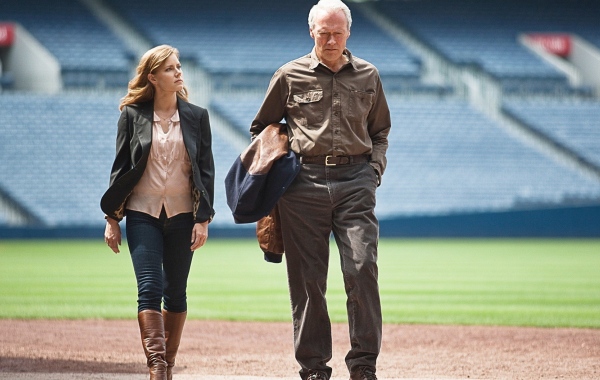 |
|
CHRIS MIKSANEK - THE MED CITY
MOVIE GUY Cinematically speaking, Clint Eastwood is a national treasure. But with a legacy second to none, some might say of late he’s been typecast and relegated to grizzled and crusty roles, a la Burgess Meredith. Hardly so. The two-time Oscar winner (three, if you count the one he SHOULD have earned for Gran Torino) is merely mining his golden years for the nuance that gives Torino’s Walt Kowalski or Gus Lobel, the aging baseball scout in the new sports drama Trouble with the Curve, depth. “A man’s got to know his limitations,” Eastwood’s Harry Callahan famously said and here the actor seems to be dealing with them. In Curve, widower Gus Lobel is losing his sight. Though the younger scouts have switched to computer stats, Gus still puts his faith in eyeballing a player’s stance and grip. For him, that means his career coming to an ignoble end is about the only thing he can see clearly. Gus then takes to the road to scout a high school wunderkind to prove he can still carry his weight. Meanwhile back in the cubicles, Lobel’s daughter Mickey (Amy Adams), overworked and underappreciated at her law firm, is feeling guilty about not being closer to her father. Theirs is a fractured relationship, but nothing that baseball can’t fix. Together, reluctantly at first then by necessity, they reconstitute that which was once between them. Contrived ending and all, it works. Eastwood has raised curmudgeoness to high art. Adams always has pleasant screen presence and the plot even manages to extract a decent performance from John Goodman. The surprise for me was Justin Timberlake, who plays a pitcher Eastwood originally scouted but has since washed-out. Now both men are competing for the same first round draft pick with Timberlake also angling for Mickey. At times, this one actually moves at the pace of a baseball game, but it’s always engaging and to me was reminiscent of both last year’s Moneyball (Brad Pitt, Jonah Hill) and The Color of Money, Martin Scorsese’s 1986 sequel to The Hustler that starred Paul Newman as an aging pool shark who sold salad dressing on the side. With great performances and genuine sentiment, Trouble with the Curve might not be a grand slam, but it’s definitely a deep fly to center field that’s going, going, it could be ... it is! |
  |
Moneyball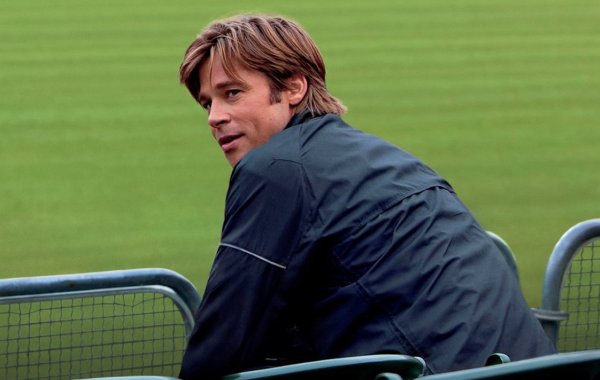 |
|
CHRIS MIKSANEK - THE MED CITY
MOVIE GUY Baseball has a special place in American culture and consequently in some of our most popular films, for instance, Robert Redford’s The Natural, or Kevin Costner’s Bull Duram. Often the sport is merely a backdrop — The Bad News Bears were, after all, a rag-tag group of misfits pulling together to fight improbable odds. In WWII uniforms they could be The Dirty Dozen. But sometimes a baseball film is just a baseball film; like Brad Pitt’s Moneyball, the biopic of Oakland A’s radical general manager Billy Beane, who was tasked with running a major league baseball team on a little-league budget. When three of his star players are poached by the deep-pocketed New York Yankees, Beane has an epiphany. With a Yale number-cruncher (Jonah Hill) he sets-out to mine affordable undervalued players to replace the expensive ones; essentially weighing sexy stats lower than one key trait: on-base percentages. Bucking the old guard – obstinate scouts and team’s manager (Academy Award winner Philip Seymour Hoffman) – he assembles a bargain team who go on to set a record for the longest winning streak in baseball history. Director Bennett Miller and writers Aaron Sorkin and Steven Zaillian (Schindler's List) did a little odds-beating themselves. They delivered an entertaining, probably Oscar-bound, dramatization of — and I am typing this in disbelief myself — baseball statistics. Credit Sorkin, no doubt, who demystified all things Zuckerberg in last year’s The Social Network. Seriously, it takes some pretty good writing to weave jargon like ‘shell scripts’ and ‘OBPs’ into a story line without marginalizing the audience. A lot of it might otherwise be dry were it not for the outstanding cast. Jonah Hill does an admirable job in one of his first non-comedic roles and Philip Seymour Hoffman is always a joy, even if we only have a small dose of the Capote star here. This one’s all Brad Pitt and his Beane, a mash-up of a thoughtful Yogi Berra and compassionate Gordon Gekko, is definitely the kind of underdog story that classic films are made of. Still, it’s far from the year’s best and I had a hard time watching this without picturing Andy Griffith’s Salvage 1 (“if we use glue sticks and duct tape instead of titanium and o-rings, we can get to the moon for only about $60,000!”). That’s not bad, It’s just what was on my mind as Beane scrounged a roster from essentially other teams’ rummage sales. Even if it’s not a shot to the center-field bleachers, it’s definitely a solid double and that’s something that Beane himself would find more valuable. |
  |
An American Carol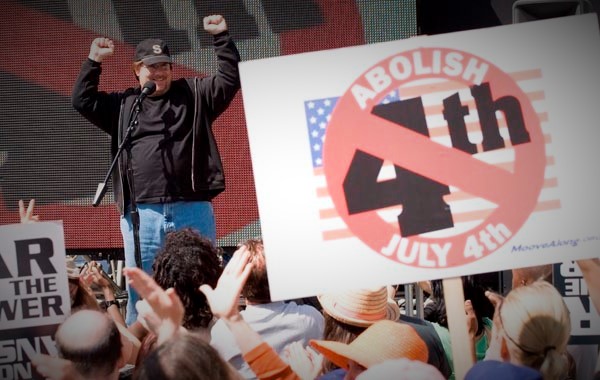 |
|
CHRIS MIKSANEK - THE MED CITY
MOVIE GUY There’s a great history lesson in An American Carol, the political comedy starring Kevin Farley and Kelsey Grammer. No, not the one about Neville Chamberlain giving peace a chance by offering Czechoslovakia as an appeasement to a dangerous dictator. It’s a reminder that once upon a time humor didn’t have to be dulled by political correctness. David Zucker, who gave us the 1980s classics Airplane! and Police Squad, brings us this wildly entertaining, and sometimes uncomfortably insolent, film that posits what our world might be like if the rabid left had their way and there were no wars. When anti-American filmmaker Michael Malone, a toned-down version of real filmmaker Michael Moore, wants to ban the 4th of July, he is visited by the ghosts of JFK, General Patton and George Washington who show him the consequences of his Anti-American liberalism (Hitler sings Kumbaya while storming Poland with his “campaign for change” and slavery still exists in America because Lincoln wouldn’t sacrifice 600,000 lives in the Civil War). Some have dismissed the movie as agitprop, focusing on its attack of the Left’s naivety and misguided efforts. But what An American Carol really spoofs is our guarded sense of humor, a funny-bone numbed by a generation of political correctness. Indeed, the film is offensive, irreverent and politically-maligning, but it’s also laugh out loud funny. |
  |
42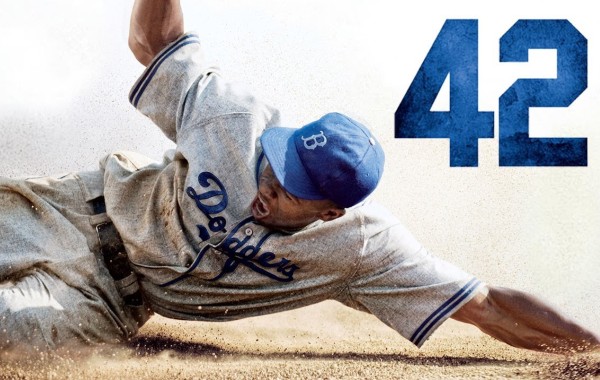 |
|
CHRIS MIKSANEK - THE MED CITY
MOVIE GUY Racism has never been quarantined to the south and nothing better demonstrates its metastasis than Jackie Robinson’s life. Robinson, as many know, was an accomplished athlete. At UCLA he excelled in track, basketball and football as well as the sport in which he would be immortalized by breaking through its color barrier: baseball. 42 isn’t the first telling of the desegregation of America’s Pastime. Robinson played himself in the 1950 film The Jackie Robinson Story. But this one’s frankness paints a harsher and consequently more realistic picture of the larger struggle for equality that the athlete represented. Harrison Ford (in one of his better performances) stars as Brooklyn Dodgers GM Branch Rickey, on the prowl for someone that will both appeal to the growing number of African American fans and help bring his beleaguered team a pennant. He takes a chance on the notoriously spirited Robinson (Chadwick Boseman) primarily because of his experience playing on integrated teams but cautions him not to fight back against the predictable resistance. “Do you want a player afraid to fight back?” he famously asks Rickey who replies “I want a ballplayer with the guts not to fight back!” Easier said than done. Acceptance comes slowly and usually because of economics. On a team trip, for example, an attendant filling the massive bus tank refuses him the use of a bathroom. “Stop the pump, we’ll buy our 99 gallons somewhere else” he declares; the gas jockey relents, “ahhh, go ahead.” And manager Leo Durocher cuts to the chase nipping in the bud any team incohesion, “we’re playing for money, winning is the only thing that matters.” Rickey too explains the only color he cares about is green before later admitting he fought hard for Jackie because “there was something unfair about the game I love.” Some aren’t so easily swayed. One of the harshest yet most necessary moments in the film has the Philadelphia Phillies manager (Alan Tudyk) relentlessly haranguing Robinson from the dugout using the vilest language. After a generation of bowdlerization, for moviegoers this is patently shocking until we realize how ubiquitous was language like this in Robinson’s time; then we are frozen in disbelief that this was ever tolerated. Through it all, Jackie Robinson stands resolute. Adept. Dignified. “If they knew you,” Robinson’s wife Rachel tells him at his lowest point, “they would be ashamed.” This one transcends baseball. |
 |
Godzilla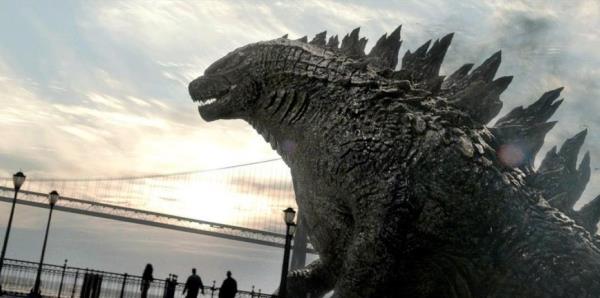 |
|
|
CHRIS MIKSANEK - THE MED CITY
MOVIE GUY Where is Iron Man when you need him?
Dormant for years, radioactive parasitic behemoths head for San Francisco to spawn more of their ugly selves. Exhausting all non-nuclear military options and pithy hashtags, our government concocts a plan to lure the two MUTOs (Massive Unidentified Terrestrial Organisms) safely out into the pacific with an armed ICBM. But a pensive Japanese scientist who bemoans man’s arrogance for thinking we can control nature has a better idea: a legendary “ancient alpha predator” who alone can restore balance to the planet, “We call him,” Serizawa says dramatically, “Godzilla!” Sixty years after the original atomic mutation first emerged from Tokyo Bay, the franchise is getting a much-deserved big-budget reboot. Working here where other modern incarnations failed are well-executed CGI and an engaging yet humbling plot. Breaking Bad’s Bryan Cranston (great to see him back in a hazmat suit, by the way) sets up the storyline as a ridiculed American engineer obsessed with echo/seismic activity that he’s convinced isn’t what the government says it is. Years pass and Cranston returns to what is now a quarantined zone drawing his estranged son into the very conspiracy that separated them to begin with. Meanwhile, the MUTOs do a fair job of ravaging everything in their path including, of course, Las Vegas which is near the historic epicenter of much of our early atomic testing. It all ends with an epic uña-a-uña battle, the results of which I won’t spoil except to say though he has remarkable little screen time, Godzilla lets-loose with plenty of trademark BTUs and does not disappoint. Absent humor, regrettably, Director Gareth Edwards delivers a suitable tribute to the king of movie monsters here though less can be said of the live performers. Cranston doesn’t disappoint and neither does Ken Watanabe (Inception) as Dr. Serizawa but the usually adept David Strathairn (The Bourne Legacy, Good Night, and Good Luck) is constricted as the Navy admiral in charge of manifesting man’s desire but inability to control nature. Still, my hand to Godzilla, this is one of the best monster films of the past quarter-century. |
|
 |
|
|

